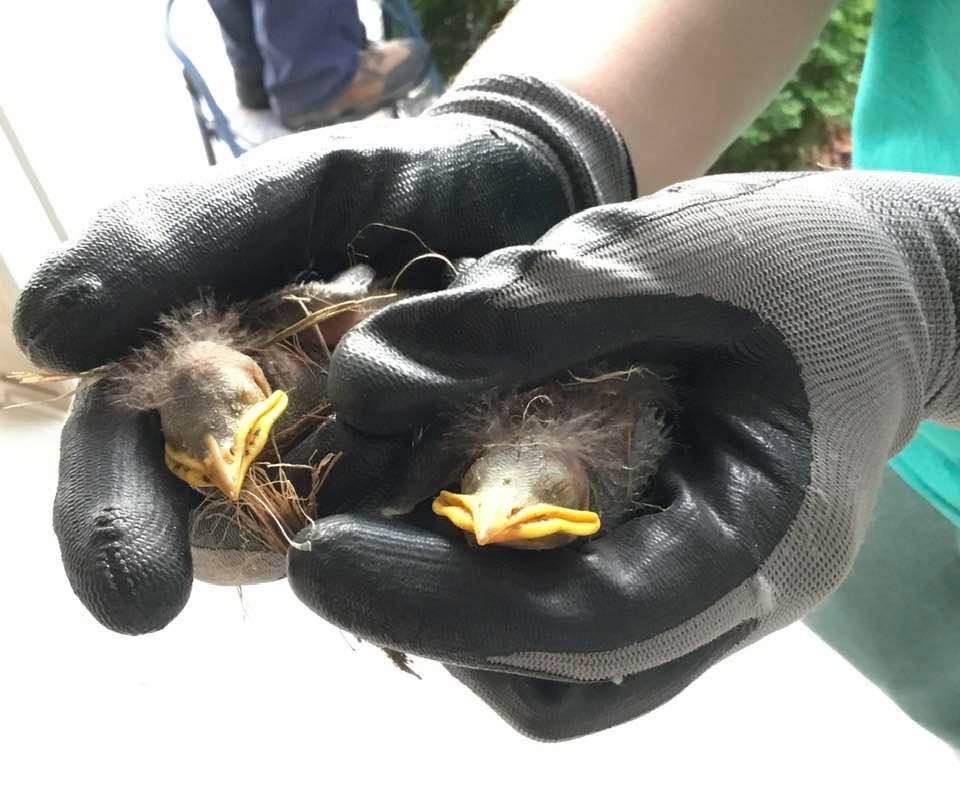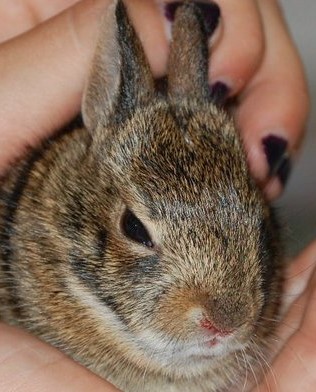
Orphaned Wildlife II
In our last article we discussed assisting orphaned or injured baby rabbits. While Michigan is home to many different types of birds, such as water fowl, raptors, and more, the most common to live in urban areas are song birds. You can reference our last article for general wildlife care guidelines and assistance on finding a licensed wildlife rehabilitator in your area.
In many cases baby song birds need just a little help or none at all. There is a common myth that if a person handles a baby bird or nest, the parents will reject the baby, this is not true. If you find a nestling, a young bird with few downy feathers, it can be placed back directly into the nest. If the baby and the nest both fell out of the tree, but it is intact, you can place the baby back into the nest and put it back into the tree.
If the nest has been destroyed you can create a surrogate nest from a small box or plastic container. Your new nest needs holes punched into the bottom for drainage, and lined with leaves, paper towels, or cloth. Place the new nest in the tree, as high as you can safely manage, out of the sun and rain if possible. Place the baby bird/s in the new nest and leave the area. If parents do not visit the old or new nest, please contact a rehabilitator.
Fledglings are birds learning to fly, and in the process spend quite a bit of time on the ground as a result. These little guys will be covered in feathers, like an adult but often have a few downy feathers. The parents will often fly down to feed and protect the fledgling. It is not uncommon for the parents to harass people or animals near the fledglings. If the fledgling is acting injured or sick, unable to flap its wings, bleeding, wings drooping unevenly, weak or shivering, please contact a rehabilitator.
While we are mainly discussing baby birds, window strikes by adult birds are also common. If a bird strikes your window and is unable to fly away, place it in a paper bag or box with air holes. Keep the bird in a safe, dark place for one to two hours. The bird will need the help of rehabilitator if it is still unable to fly away within two hours.
Just like our baby rabbits, birds will need a safe container while waiting care of a rehabilitator. Line the inside of a pet carrier, shoebox, or box with a soft cloth. If using a box, don’t forget to add a few holes for ventilation. Wearing gloves, gently transfer the bird to the prepared container. Until the rehabilitators arrive, keep the bird warm by placing a heating pad under ½ of the box. This allows the bird a place to cool down, if they become too warm. If using a pet carrier, place a towel over the door to keep the light low.
To find a licensed wildlife rehabilitator, you can contact you local Humane Society, Audubon Society, local animal control, NRWA, and the International Wildlife Rehabilitation Council (IWRC).






Recent Comments